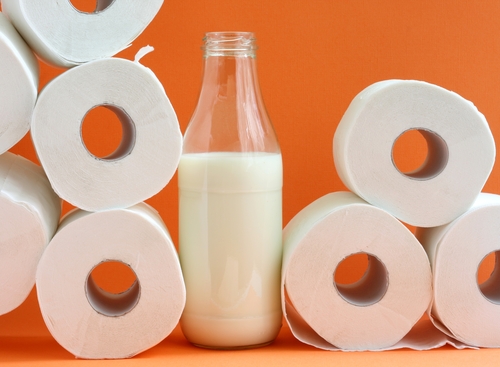Why Milk Could Be The Cause of Your Tummy Ache: How to Know If You Are Lactose Intolerant
Does the thought of having a tall glass of milk make your…

Does the thought of having a tall glass of milk make your stomach churn? Do you experience diarrhoea, gas and cramps whenever you eat dairy? If so, you could be one of the billions of people worldwide who suffer from Lactose Intolerance, a condition in which the body cannot digest lactose, the sugar naturally found in milk.
Also known as Lactase Deficiency, Lactose Intolerance mainly affects people of colour. An article published in Nature (2013) suggests an 80-90% prevalence rate in some African populations.
Milk Allergy, Lactose Intolerance … What’s the Difference?
Often mistaken for the same thing, there is a difference between lactose intolerance and milk allergy. Lactose Intolerance occurs when the body does not have enough of the milk digesting enzyme, Lactase.
While symptoms can be rather uncomfortable, they are generally not life threatening. Signs of lactose intolerance range in severity according to the type of dairy product eaten and the amounts consumed.
Symptoms may include gas, bloating, nausea, diarrhoea and cramping. In contrast, a milk allergy occurs when the body views the protein in milk as an invader and tries to protect itself by releasing antibodies. Severe milk allergies can be fatal. In addition to the symptoms of intolerance, signs of milk allergies also include wheezing, hives, vomiting, rash, itchy eyes and running nose.
How do I know if I am Lactose Intolerant?
The first way to determine lactose intolerance is to observe how you feel after eating a dairy product. If you experience any sort of abdominal discomfort including diarrhoea and cramps, you could be lactose intolerant. This is especially true if any of your family members cannot tolerate dairy products. Your doctor can also diagnose lactose Intolerance by analysing your breath or stool.
Sources of Lactose
While milk and dairy products are the obvious sources of lactose in the diet, they are not the only culprits. Lactose is hidden in many of the foods you may enjoy on a daily basis. Read the ingredient list to determine if something has lactose. Some of the words to look for on the label include curds, whey, lactose and milk-by-products. Foods that may contain lactose include:
- Baked goods such as bread and cakes
- Processed foods such as pancakes, doughnuts and chips
- Processed breakfast cereals
- Powdered shakes
- Salad dressings and spreads
- Protein bars
How to cope with Lactose Intolerance.
The most common way of coping with Lactose Intolerance is to avoid dairy products. However, this is not always needed. Several studies suggest that there are ways to still enjoy dairy while suffering from lactose intolerance;
- Experiment with small amounts of dairy. Many people can enjoy up to 240ml (8 oz.) of milk or dairy without adverse effects.
- Try yogurt and cheese which have less lactose than fluid milk.
- Have dairy as part of a meal rather than by itself. The addition of other foods helps in the digestive process.
- Buy commercial products which have the milk sugar pre-digested. These include Lactaid® and Lactofree® product brands.
- Supply your body with the milk digesting enzyme Lactase by trying over the counter supplements
- If cow milk remains a problem, try plant based milk products such as soya, rice almond and coconut milk.
To prevent nutrient deficiency, people who cannot tolerate dairy should eat a well-balanced diet with foods that are high in vitamin D and calcium. These include dried and tinned fish (eaten with the bone), bone marrow, leafy green vegetables, legumes, mushrooms, eggs and liver.
Here’s to your health!

